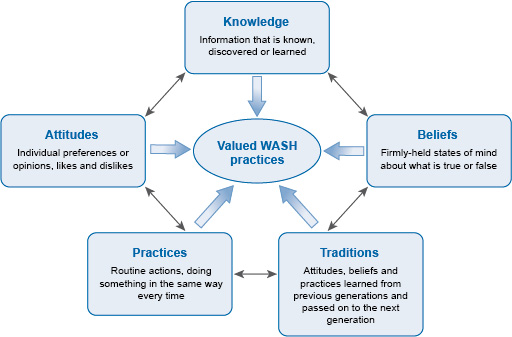13.2 How does the social environment influence WASH practices?
The building blocks of our behaviour lie in our knowledge, practices, attitudes, beliefs and traditions, all of which contribute to the social environment. Figure 13.2 summarises the interactions between these invisible aspects of the inner personal world of every individual and their community, and shows that they all influence whether good water, sanitation and hygiene practices are adopted.

We have called the behaviours at the centre of Figure 13.2 ‘valued WASH practices’ to indicate that they are actions that a community values and approves. Individuals who are observed doing these actions (for example, washing their hands before eating) gain credit from others in the community because they are behaving in these valued ways. An example of a behaviour that is valued in rural Ethiopia is debo, the practice of neighbours working together to harvest the crops from each farm in turn.
Notice that each part of Figure 13.2 is interacting with all the other parts to influence valued WASH behaviours. The main message of the diagram is that you must consider all these aspects in the social environment of your community if you want to be successful in replacing unhealthy or environmentally damaging behaviours by valued WASH practices. We begin by considering the limitations of knowledge to bring about behaviour change from unhealthy to good WASH practices.
13.1 The physical and the social environment
